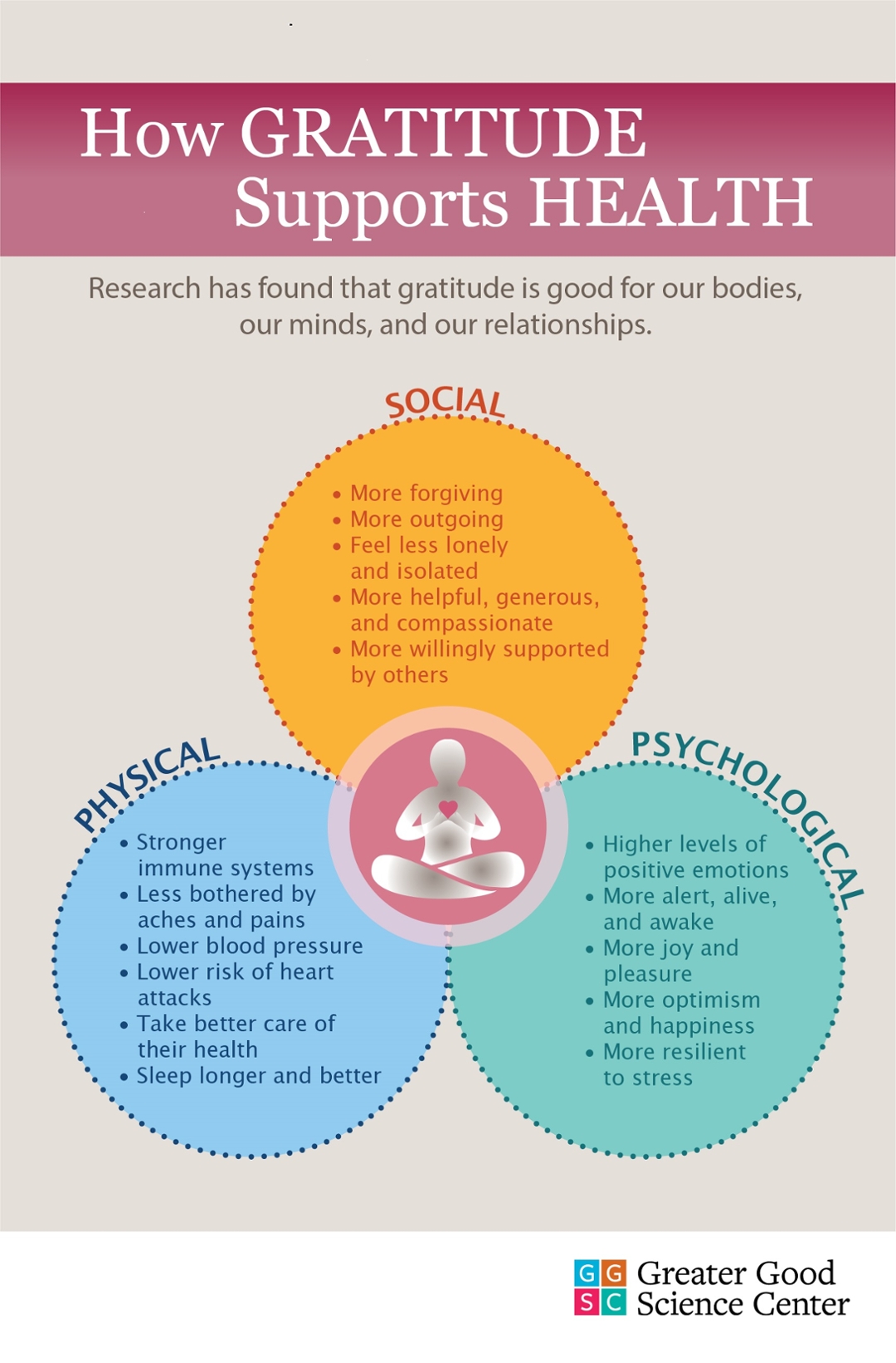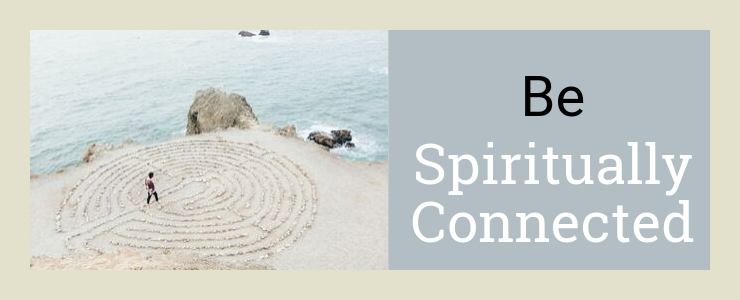Be Spiritually Connected
Spirituality bolsters overall wellness. You might try one of the many spiritual denominational groups on campus to practice your faith and be in community with like-minded religious folks.
You can also cultivate spiritual wellness even if you aren't religious. Below are some helpful resources on how to use mindfulness meditation and gratitude practices.
Need a Quiet Space to Pray or Meditate?
- The Reflection Room in the Bay Tree Building room 106 (ground floor next to the Express Store) is open daily from 6:00 am until 9:00 pm.
- The Politics Department hosts a quiet space on the first floor of the Merrill Academic Building. Merrill 7B is open Monday through Friday from 8:00 am to 5:00 pm for prayer, reflection, meditation, and silence.
Mindfulness: An Everyday Practice Anyone Can Do
Mindful awareness can be defined as paying attention to present moment experiences with openness, curiosity, and a willingness to be with what is. Mindful awareness invites us to stop, breathe, observe, and connect with one's inner experience. There are many ways to bring mindfulness into your life, such as meditation, yoga, art, or time in nature. Mindfulness can be trained systematically, and can be implemented in daily life by people of any age, profession or background.
Significant research shows how mindfulness addresses health issues such as lowering blood pressure and boosting the immune system; increasing attention and focus, including aid those suffering from ADHD; helping with difficult mental states such as anxiety and depression, fostering well-being and less emotional reactivity; and thickening the brain in areas in charge of decision making, emotional flexibility, and empathy.
Starting a Mindfulness Practice
Mindfulness can be practiced in so many ways. We can train ourselves to pay attention to the present moment in our daily lives and be with what is happening in that moment. Meditation is a common way that people practice mindfulness. Not all mindful practices mean you have to sit with your eyes closed and listen to guided meditation. We can be mindful in doing the dishes, taking a walk or drinking a hot cup of tea to name a few approaches.
Give yourself some time to build a mindfulness practice. Try several types of mindful strategies and consider doing something several times a week so you can see what works for you. Many people will set a goal of 5- 10 minutes a day to work on a Mindful Practice- you decide. One of the most valuable aspects of meditation is that it can build resilience over time, but it can also help one feel less stressed in minutes if used as a tool to simply relax your body and mind.
- Getting Started- 5 minute meditation
- Mindful Practices in 5 Minutes or Less
- Eight quick mindfulness meditation exercises that can fit in your day!
- All it takes is 10 mindful minutes (TED Talk)
- UCLA Mindful Awareness Research Center (MARC) 30-minute Mindfulness 101 video
- Free on-campus meditation group: beginners and experienced meditators welcome
Mindfulness Walking Practice
You don't have to sit still to be mindful. Combine the great outdoors with mindfulness and take a walk. Here are a few links to get you started.- Walking Meditation: Turn an everyday action into a tool for mindfulness and stress reduction
- A Daily Mindful Walking Practice: Take a break and boost your mood with this 10-minute walking meditation
- WildMind Meditation: A video introduction to walking meditation
- Walking Meditations App by Walking Oasis
Mindfulness Tools and Apps
We highly suggest staff and students try the free One Perfect Meditation free app for UCSC students.
A few other popular guided meditation apps are:
- Breathe
- Simple Habit
- Headspace
- YouTube also has thousands of meditations. Search for “Mindfulness Meditation” or add words like sleep or gratitude to your mindfulness search. Get some headphones and a place to sit, walk, or lie down, and you can get started even if others are around you.
Grateful Living and Building a Gratitude Practice
Gratitude Defined: A state of being grateful, thankful and appreciative.
Robert Emmons, Ph D. A leading scientific expert on gratitude at UC Davis, explains that gratitude has two key components: “ First, it’s an affirmation of goodness. We affirm that there are good things in the world, gifts and benefits we’ve received. Second, we recognize that the sources of this goodness are outside of ourselves…We acknowledge that other people…gave us many gifts, big and small, to help us achieve the goodness in our lives.”
Grateful living is an approach to life which asks us to notice all that is already present and abundant – from the tiniest things of beauty to the grandest of our blessings – and in so doing, to take nothing for granted. We can learn to focus our attention on how life is a gift. Even in the most challenging times, living gratefully makes us aware of, and available to, the opportunities that are always available; opportunities to learn and grow, and to extend ourselves with care and compassion to others. Learn more about grateful living at gratefulness.org or watch these two short intro videos:
- Awesome Gratitude Video! Stop. Look. Go (2 minute video)
- Why Gratitude is Good: Breaking it Down by Robert Emmons (4 minute video)
Gratitude practice has serious benefits!
When we Practice Gratitude we are rewiring our brain to look for the positive. Gratitude allows us to celebrate the present and can block toxic, negative emotions. Research from around the world shows that grateful people are more stress resistant and grateful people have a higher sense of self-worth.
Physical benefits- Stronger immune systems
- Less bothered by aches and pains
- Lower blood pressure
- Exercise more and take better care of their health
- Sleep longer and feel more refreshed upon waking
- Higher levels of positive emotions
- More alert, alive, and awake
- More joy and pleasure
- More optimism and happiness
- More helpful, generous, and compassionate
- More forgiving
- More outgoing
- Feel less lonely and isolated

How to Start a Gratitude Practice
A Gratitude Practice is supported by daily intentions, tools, habits of mind and behaviors that can be learned, translated and applied to many aspects of our lives.
Gratitude Practice is about noticing and acknowledging good things, looking for good, looking for little gifts and then taking a moment to savor and absorb what is good around you and in your life. Here are some ways to practice gratitude:
- Use a Daily Gratitude Journal. Take 1-3 minutes to identify what you are grateful for every day. Take a moment to note it in some way. You can leave a journal to write in next to your bed for evening or morning practice or you can download a free or low cost gratitude journal. Take the time to notice what is good. Find 1-5 things you are grateful for each day.
- Practice mindfulness meditation with focused meditations on gratitude. One option is to use the Gratitude Meditation script below. Or you could try this Ten Minute Morning Meditation for Gratitude and Positivity to Start your Day (YouTube).
- Write and send thank you notes, emails, texts, or videos. Sometimes the best gratitude comes in small doses: a little thank you note of two or three sentences makes you and the receiving individual feel good. Some people make a practice to appreciate someone daily and others may make a practice of sitting down and writing thank you cards once a month. The act of appreciating others has shown to improve health outcomes!
- Volunteer! You can volunteer in the community with friends, campus groups, or family. Or you can donate your time and skills to others who need them: tutoring, a ride to the airport, cooking a meal etc.
Gratitude Meditation Script
Go at your own pace and include anything else that comes to mind:
- Settle yourself in a relaxed posture. Take a few deep, calming breaths to relax and center. Let your awareness move to your immediate environment: all the things you can smell, taste, touch, see, hear. Say to yourself: “For this, I am grateful.”
- Next, bring to mind those people in your life to whom you are close: your friends, family, partner…. Say to yourself, “For this, I am grateful.”
- Next, turn your attention onto yourself: you are a unique individual, blessed with imagination, the ability to communicate, to learn from the past and plan for the future, to overcome any pain you may be experiencing. Say to yourself: “For this, I am grateful.”
- Finally, rest in the realization that life is a precious gift. That you have been born into a period of immense prosperity, that you have the gift of health, culture, and access to spiritual teachings. Say to yourself: “For this, I am grateful.”
Gratitude and Technology Tools
- Grateful App- Electronic Journal (Easy to use gratitude journal, you can upload photos and there are great prompt questions to help you search for the good in the present and near future.)
- HeadSpace and Breath Apps (both have specific guided meditations on gratitude)
- Gratitude Jar Gratitude posts and tweets from all over the globe are here to inspire and connect you to the world.


